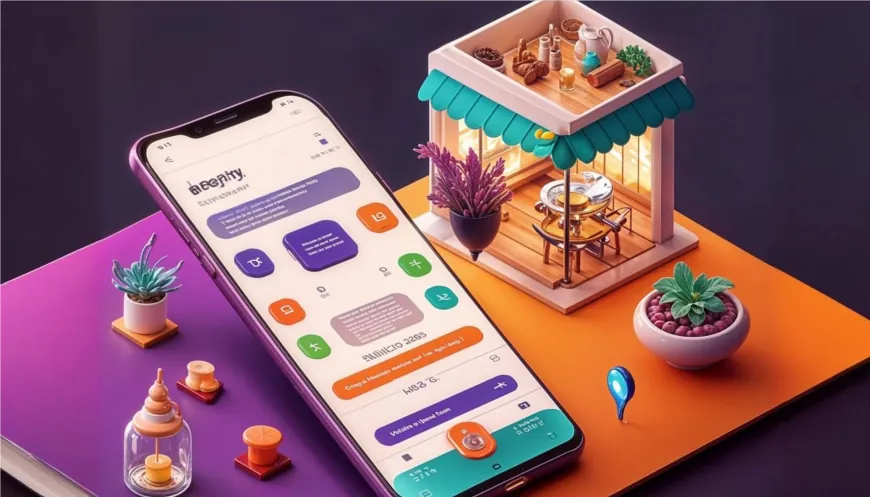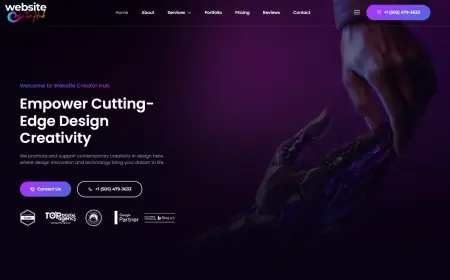Enhancing Restaurant Experiences with Augmented Reality: The Future of Dining Apps
Discover how augmented reality (AR) is transforming user experiences in restaurant apps. Explore features, benefits, and the role of AR in restaurant app development.

In the fast-evolving world of dining, integrating technology into customer experiences is no longer optional; it’s essential. Augmented reality (AR) is one of the most exciting technologies reshaping the restaurant industry. It offers unique ways to engage customers, enhance their dining experiences, and streamline operations. Companies like Appkodes Restaurant App Development are at the forefront of this innovation, crafting apps that not only serve menus but also create immersive experiences. In this article, we will explore how AR is impacting restaurant apps and why it’s crucial for restaurant owners to consider this technology in their restaurant app development strategies.
1. Understanding Augmented Reality (AR)
Augmented reality blends digital elements with the real world, allowing users to interact with both seamlessly. Unlike virtual reality (VR), which immerses users in a completely digital environment, AR enhances the real world by overlaying digital information on it. This technology has been used in various fields, from gaming to education, and is now making significant strides in the restaurant sector.
For instance, consider the popularity of AR in retail, where customers can visualize products in their homes before purchasing. In the restaurant world, a similar approach can be applied to menus and dishes, providing a richer context for customers before they place their orders.
2. Enhancing Menu Exploration
Imagine entering a restaurant and pointing your smartphone at the menu, only to see 3D models of each dish pop up on your screen. This is the power of AR in enhancing menu exploration. By allowing customers to visualize their options in a dynamic way, restaurants can significantly improve decision-making.
For example, an app that uses AR can show a vibrant image of a meal alongside its description, making it easier for diners to choose dishes that excite them. A study from the Journal of Retailing suggests that visual aids can boost sales by up to 30%, proving that AR can be a game-changer in attracting customers.
3. Interactive Dining Experience
AR can transform a standard meal into an unforgettable event. Imagine dining at a restaurant where the table itself becomes a canvas for interactive games, trivia, or storytelling about the dishes. This level of engagement can turn a simple dinner into an experience, encouraging diners to linger longer and potentially order more.
Some restaurants have already begun experimenting with interactive elements through their apps. For example, customers can unlock AR features that reveal the story behind a dish, its ingredients, or even fun facts about the chef. This not only entertains but also educates diners, enhancing their overall experience.
4. Personalized Recommendations
With AR technology, restaurants can provide personalized recommendations based on individual customer preferences. For instance, if a diner often orders vegetarian dishes, an AR-enabled app can highlight new vegetarian offerings or suggest pairing options.
This level of personalization can lead to higher customer satisfaction and loyalty. Studies have shown that tailored experiences can increase customer retention rates by 15%. By leveraging AR, restaurants can create memorable dining experiences that keep customers coming back for more.
5. Visualizing Ingredients and Nutritional Information
In an age where health-conscious dining is on the rise, transparency is key. AR can help bridge the gap between customer expectations and reality by allowing users to visualize ingredient sourcing and nutritional information right from their smartphones.
For instance, an app could show where ingredients are sourced, their nutritional breakdown, or even allergy warnings by simply pointing the device at the dish. This transparency builds trust and can be particularly appealing to health-conscious consumers who want to make informed choices.
6. Promotions and Loyalty Programs
Augmented reality can also revolutionize how restaurants handle promotions and loyalty programs. Imagine a diner walking into a restaurant and using an app to scan their table for exclusive discounts or loyalty rewards that pop up on their screens.
This not only encourages diners to engage with the app but also fosters a sense of excitement and exclusivity. Restaurants can track which promotions are most successful and adjust their marketing strategies accordingly, making AR a powerful tool for boosting customer engagement.
7. Integration with Startup Mobile App Development
As restaurants explore AR technology, partnering with firms specializing in startup mobile app development becomes crucial. These developers can create tailored solutions that integrate AR into the restaurant’s existing app or build a completely new app that leverages this innovative technology.
However, integrating AR comes with its own set of challenges. Developers must ensure that the AR features work seamlessly, are user-friendly, and are compatible with various devices. Choosing the right technology partner, such as Appkodes, can make a significant difference in overcoming these hurdles.
8. Future Trends in AR and Restaurant Apps
The future of AR in the restaurant industry looks promising. As technology continues to advance, we can expect more sophisticated features, such as real-time menu updates, interactive cooking demonstrations, and even virtual tours of kitchens.
Emerging trends will likely include more personalized user experiences, better integration of AR with social media, and the use of AR for in-store navigation to enhance the overall dining experience. Restaurant owners who embrace these trends will position themselves ahead of the competition.
Conclusion
The impact of augmented reality on restaurant app user experiences is profound and multifaceted. From enhancing menu exploration to offering personalized recommendations, AR provides opportunities that can redefine how customers interact with dining establishments. As the restaurant industry continues to evolve, those who adopt technologies like AR will be better equipped to meet customer demands and stand out in a crowded market.
Investing in restaurant app development that incorporates AR is no longer just an option; it’s becoming a necessity. With innovative companies like Appkodes leading the way, the future of dining is sure to be an exciting journey.
What's Your Reaction?
 Like
0
Like
0
 Dislike
0
Dislike
0
 Love
0
Love
0
 Funny
0
Funny
0
 Angry
0
Angry
0
 Sad
0
Sad
0
 Wow
0
Wow
0




















































